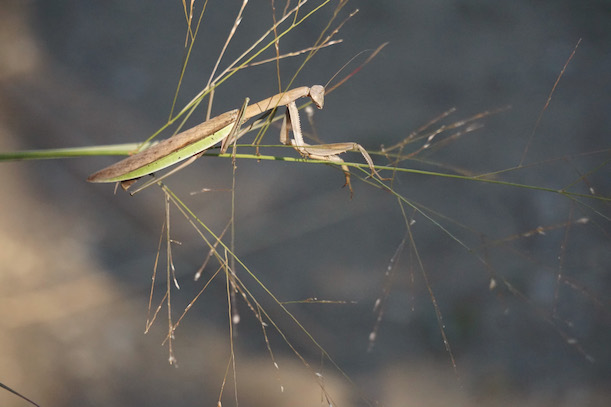BOOMbox at Home: Mimicry and Camouflage
November 12, 2020

Animals in the wild use many tactics to survive. They include running fast, flying, or being able to blend in with their environments. Animals can blend in through mimicry or camouflage. Even though both have the same outcome--survival--mimicry and camouflage look, or sound, very different.
Mimicry
Mimicry is used by animals to mimic, or copy, a different animal. Sometimes it can be striking, like what’s shown in this National Geographic video of a caterpillar mimicking a snake.
The first type is called Batesian mimicry, which is where less dangerous species, such as prey, imitate more dangerous animals, like predators. It is known as the “wolf in sheep's clothing” mimicry. One example of Batesian mimicry includes the coral snake and the milk snake. Both have the same coloring, just in different variations or patterns. It has inspired the saying, “red touches black, harmless--red touches yellow, venomous.”
Mullerian mimicry is when two species have some of the same evolutionary traits and share the same predator. It is most common when a distasteful or poisonous animal looks almost identical to one that is safe to eat. One example of this is the monarch butterfly and the viceroy butterfly. These butterflies look similar, but the monarch butterfly is toxic or inedible, while the viceroy is edible.
Vavilorian mimicry is specific to plants. Weeds evolve to resemble domesticated plants. This is done through humans unknowingly playing a part in their mimicry. An example of Vavilorian mimicry is the rye plant. Rye has very similar characteristics to wheat, and when humans were growing it, would often not weed it out because it looked like wheat.
If you’re outside and not sure what you’re looking at, you can always reference iNaturalist or the Seek app to double check the species.
Mimicry in Birdsong
Why do birds sing? To help attract a mate or to make a claim of ownership over territory. Depending on the bird, it might not sound so much like singing--some birds whistle tunefully, while others chirp, caw, or make sounds that sound almost like a machine. Bird Song Hero is an online game that teaches you to identify the songs of birds around the world. This game was developed by the Cornell Lab of Ornithology, which has several free apps to use for birdwatching, and a lot of great citizen science projects to participate in.
Have you heard of a mockingbird, either in stories or songs? The mockingbird gets its name from its habit of mimicking the songs of other birds. The starling is another copycat bird as well. These birds copy the songs of other birds and add them to their own songs Having a diverse and complicated song helps them in the competition to attract a mate. Ornithologists, or bird scientists, have been able to track where these birds have traveled based on what songs they have collected. Mockingbirds have also been known to imitate sounds that aren’t other birds, like car alarms and barking dogs!
Now that you’re aware of different types of mimicry, try spotting mimicry in your backyard or local park.
Camouflage
Camouflage is a pattern or coloration that allows animals to blend in with their environment. One of the most basic forms of camouflage is color matching. Deer are an example of color matching, as their hide can blend in with the brush or leaves around them. Scientists who study camouflage do so by studying crypsis, an animal's ability to avoid observation or detection from other animals.
Create your own form of camouflage or mimicry. Can you point out any camouflage examples near you? We found the praying mantis in the photo above!
Scientist of the Week
Henry Walter Bates was a British naturalist who studied insects and other animals in the Amazon rain forest. Bates would spend close to 11 years in the Amazon before his health started to fail. He became friends with another scientist, Alfred Russel Wallace, who was teaching at Leicester Collegiate School.
His collection of specimens totaled nearly 14,000. When he sent back his collection, he split it between three different ships, to help prevent all of it being lost if a ship went down. He split his collection into three because his friend, Wallace, shipped his back all on one ship, which later sunk, along with all of Wallace’s specimens. Bates would later study mimicry within these species and those that he witnessed in the Amazon.
Written by Erica and Frannie.